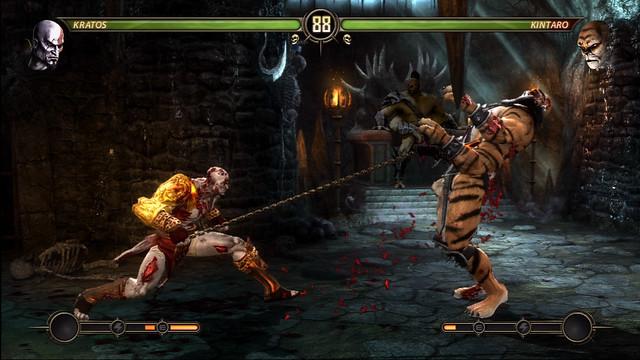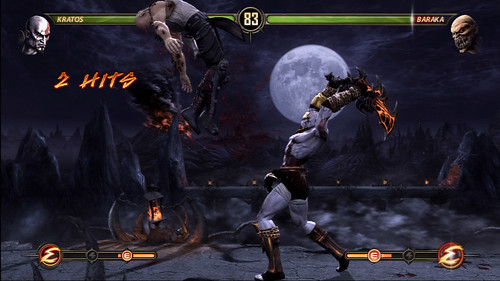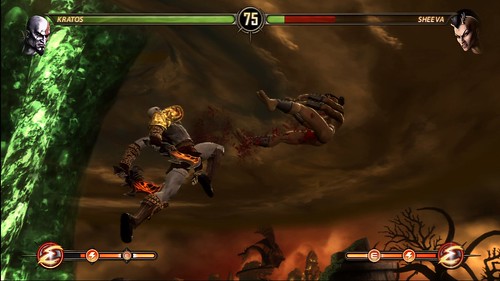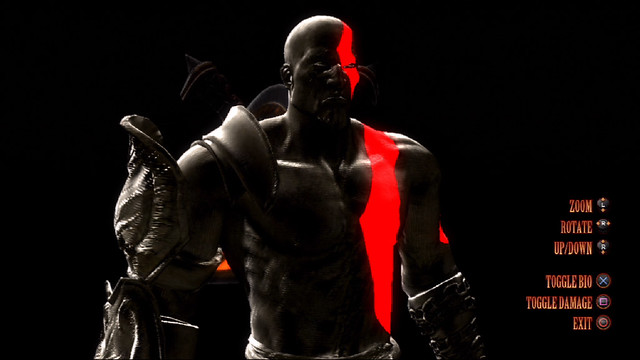When the latest issue of Justice League is released on Wednesday by DC Comics, it will be scrutinized like no other installment in the 76-year history of that publisher of superhero adventures.
Some readers may be drawn in by its cover depicting revised incarnations of Superman and Batman, or a story line that tells of a tense first meeting between these costumed characters before they became allies.
But DC is betting that more potential customers will be attracted by an insignia that boldly declares this to be issue No. 1 of Justice League; never mind the hundreds of chapters that came before it.
Starting on Wednesday, the publisher is resetting all 52 of its continuing series, including venerable titles like Action Comics and Detective Comics that introduced Superman and Batman in the 1930s,at issue No. 1, and using the opportunity to revise or jettison decades of continuity in the heroes' fictional lives.
Within the DC universe, this new status quo is the result of efforts by the fleet-footed Flash to alter the course of history. But in the real world it is a last-ditch plan to counteract years of declining sales throughout the comics business.
The success or failure of this plan will have far-reaching implications: it could alienate longtime fans for the sake of new readers. And it could portend a more widespread exhaustion with film and television projects that are adapted from comic books and that are constantly starting over from scratch.
In an entertainment industry that is perpetually looking to breathe new life into old properties, and that has planned several years of movies and multimedia projects about back-to-basics superheroes, this revisionist strategy could determine "whether or not DC Comics, as a comic-book publishing company, will continue in the future," said Rich Johnston, a blogger who covers the comics business for the Web site Bleeding Cool. "There's an awful lot at stake here, and that's why they've thrown everything and the kitchen sink at this."
DC, which is owned by Time Warner, has long lagged behind its rival Marvel Comics, the Disney-owned publisher of Spider-Man and Captain America, in market share if not audience enthusiasm. Its latest company-wide overhaul has been almost a year in the making, devised in October at an editorial retreat where staff members were trying to create a love triangle for Superman, who wed Lois Lane in 1996.
Once the team decided it did not have to be bound by this marital detail, "we started talking about a lot of crazy, what-if situations, and out of that openness came the idea of renumbering the entire line," said Jim Lee, co-publisher of DC Comics and an illustrator of the new Justice League series.
The publisher says its streamlined storytelling efforts are aimed at its existing readership as well as at new or lapsed comics buyers, but acknowledged that an issue labeled "No. 1" was particularly inviting to first-timers.
"I certainly wouldn't buy a DVD series of a hit show and start at Season 7," Mr. Lee said. "I would want to go back and start from the beginning."
The process of restarting a long-running narrative at Page 1 - known in industry parlance, and with growing derision, as a reboot - is nothing new to comics: in the 1980s DC dismantled its narrative architecture in the venerated mini-series "Crisis on Infinite Earths," and has sought to recapture its anything-could-happen spirit in story lines with titles like "Infinite Crisis" and "Final Crisis." DC and Marvel have been revising their World War II-era characters since at least the 1950s,and Marvel has an entire publishing line, Ultimate Comics, that features contemporary takes on its traditional heroes (like a Spider-Man who is of black and Hispanic descent).
In Hollywood the reboot impulse has yielded hit films like "Batman Begins" (and its billion-dollar-grossing sequel, "The Dark Knight") and noncomics properties like this summer's "Rise of the Planet of the Apes."
The DC reboot arrives at a crucial moment for the comics business, which, like the publishing industry as a whole, is experiencing continued erosion in sales.
Recent reports by ICv2, a research company that tracks pop-cultural products, said that in July dollar sales of periodical comics were down 4.27 percent from the same month last year, down 4.6 percent in June and down 6.3 percent for the second quarter over all. Sales of graphic novels at traditional bookstores were up, though this was partly because of the liquidation of the Borders bookstore chain.
The success of superhero movies like "Thor" and "Captain America: The First Avenger" did not entirely rub off on the comics that inspired them, with individual titles struggling to sell more than 100,000 copies at $2.99 or $3.99 a copy. One possible bright spot: DC says preorders for Justice League No. 1 have exceeded 200,000 copies.
Meanwhile, the increasing number of entertainment franchises that apply a back-to-basics approach to comics characters is suggesting a paucity of original ideas. Next summer Sony Pictures Entertainment will release "The Amazing Spider-Man," a 3-D retelling of the origin story seen in the 2002 hit "Spider-Man." Warner Brothers has a new Superman movie, "Man of Steel," coming in 2013, following an unsuccessful reboot, "Superman Returns," in 2006, and is contemplating a new Batman series to follow the 2012 sequel, "The Dark Knight Rises."
"That whole attitude of, 'Oh, go ahead, start over, reboot,' people get tired of that and it worries me," said Jim Shooter, a former editor in chief of Marvel Comics who now holds that title at the comics publisher Illustrated Media. "As storytellers, I don't know where we wandered off to."
Henry Jenkins, the provost's professor of communication, journalism and cinematic arts at the University of Southern California, said the idea of returning classic heroes to their origins long predated comic books.
"Part of the nature of culture is that we retell stories that are meaningful to us, again and again, in different ways," Mr. Jenkins said, pointing to Homer's "Iliad," Virgil's "Aeneid" and Dante's "Inferno" as "continual reboots of Greek mythology."
But Mr. Jenkins said that he - like other fans -has come to question the motives behind many of the pop-culture reboots. "We can see revamps that have no clear purpose, endless numbers of '80s TV shows being brought to the screen with no innovation to speak of," he said. "Or we can talk about revamps that actually go someplace," like the recent revival of "Battlestar Galactica," which "is much deeper than the original 'Battlestar Galactica.' "
DC Comics executives were nonetheless enthusiastic about their chances for success and said there was no undo button for the changes about to be put in place.
"We're not looking for a way of going back to what we did before," said the DC editor in chief Bob Harras,who was Marvel's top editor in the mid-1990s. "We like to say here, 'No trap doors.' This is what we're doing."
But others are contemplating the possible outcomes if DC's latest clearing of the table does not increase sales over the long run.
Laura Hudson, the editor in chief of the Web site Comics Alliance, said the business was eventually headed for a reckoning in which "this very specific ritual of going to the comic-book shop once a week to get your new 22-page comic" becomes obsolete.
"It's hard to see it persisting into the future in exactly the way it's existed before," Ms. Hudson said. "It's going to stop as soon as it stops becoming profitable."
Though DC seems to be laying the groundwork for such a transition by selling digital versions of its new comics on applications for tablet devices, Mr. Harras said he hoped to see the traditional sales model endure. "I love print, I love going to the comics shop, I've done it for more years than we can count," he said.
One colleague who does not seem to share Mr. Harras's optimism is the prolific comics writer Grant Morrison, who in a recent interview with Rolling Stone said there was "a real feeling of things just going off the rails" in his industry, and that the superhero narrative had perhaps outgrown the printed page and "found a better medium through which to replicate" in movies or video games.
Among the various assignments currently on Mr. Morrison's plate, he is the writer of DC's newly rebooted Action Comics.

 I was just watching the local news a few minutes ago. Lots of interesting stuff going on these days. But Arizona Cardinals getting their asses handed to them is nothing new. But the thing that pissed me off the most was the NBA.
I was just watching the local news a few minutes ago. Lots of interesting stuff going on these days. But Arizona Cardinals getting their asses handed to them is nothing new. But the thing that pissed me off the most was the NBA.






































